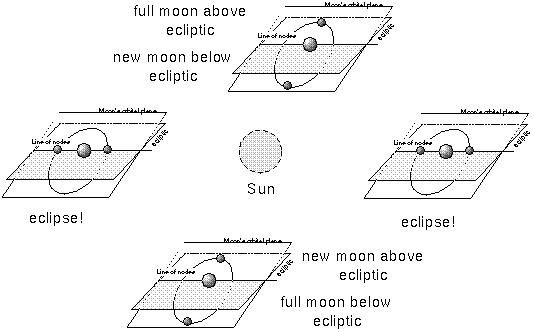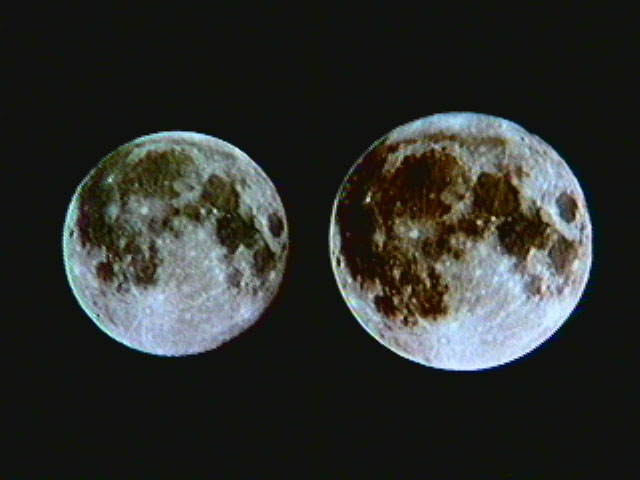Why are eclipses rare?
Moon orbit tilted with respect to Earth's orbit. Moon passes through ecliptic plane twice
an orbit.


Note how the shadow tapers in a cone-shape
Moon must be in ecliptic EXACTLY at new or full phase for an
eclipse.

Moon's orbit also ``wobbles'' (precesses)

Lunar Eclipse: Moon covered up during full phase (moon is in Earth's shadow)

How sunlight still reaches full moon when it is in Earth's umbra during lunar eclipse:

Bluer colors scattered away more than redder colors, so more redder colors reach moon than bluer colors--total lunar eclipse moon looks orange-red.
Solar Eclipse: Sun covered up during new phase (part of Earth is in moon's shadow)
Earth's umbra is much larger than moon's umbra, so total lunar eclipses are more common than total solar eclipses.
Moon's Elliptical Orbit

Moon at perigee (left) on August 7, 1981 and at apogee (right)
on August 22, 1981

Full Moon at apogee (left) on September 20, 1975 and at perigee
(right) on January 8, 1974. These show that a Full Moon can be at perigee or apogee or any distance in between. Same goes for any other phase of the Moon.
To make a TOTAL SOLAR eclipse, the NEW MOON must be exactly in the ecliptic AND also be at or very near perigee. If not, then you will get either a partial solar eclipse or an annular solar eclipse. See the "More eclipse pictures slide" for examples.
See the online textbook for nice color
pictures of lunar and total solar eclipses and any format of the textbook for more details of what
happens during an eclipse.
Lecture slides (select the links to view the slides)









